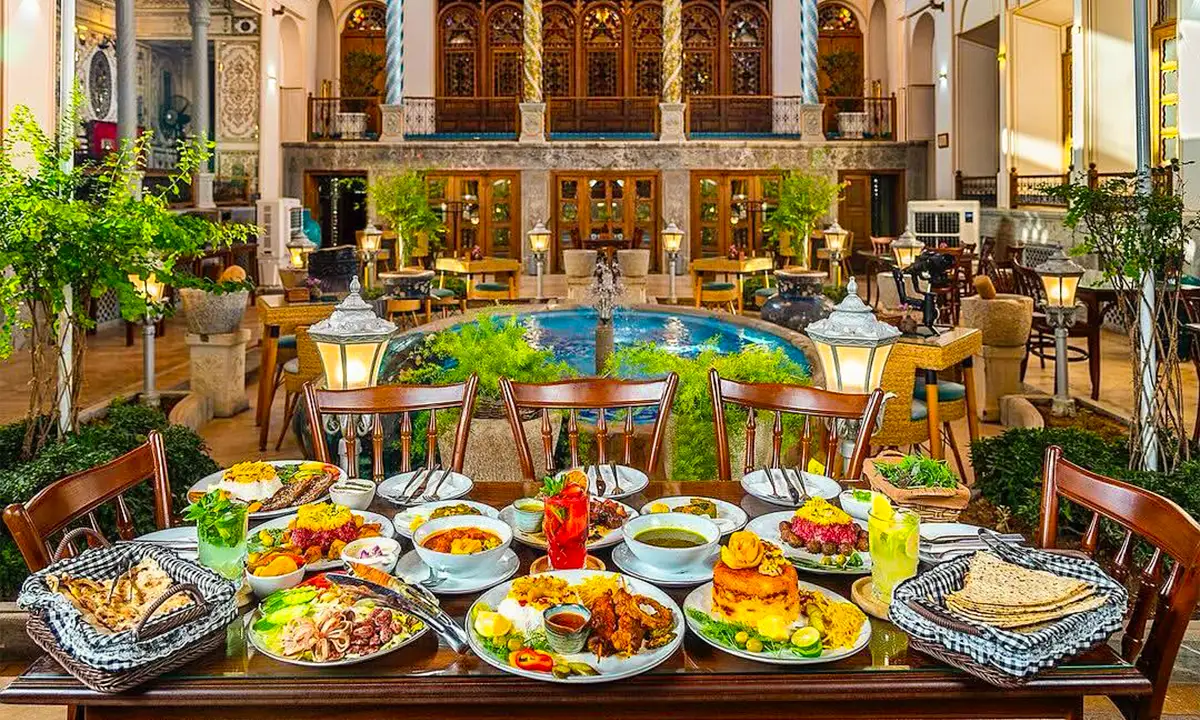The difference between Western and Eastern restaurants

Restaurants around the world are more than just places to eat; they’re gateways to the culture, history, and lifestyle of a region, and the differences between Western and Eastern restaurants stand out as two distinct worlds in the culinary universe, offering a fascinating story full of subtle nuances that can captivate any food lover or restaurant owner, and in cities like those hosting vibrant dining scenes, such as restaurant Esfahan, these differences are vividly apparent, and in this article, with a warm and engaging tone, we dive into the contrasts between Western and Eastern restaurant, exploring aspects like food style, decor, hospitality culture, and customer experience to understand what sets these two worlds apart and how they create unforgettable moments side by side, and when we think of Western restaurants, images of European or American eateries come to mind, with neatly arranged wooden tables, soft lighting, and menus brimming with steak, pasta, and burgers, while Eastern restaurants, particularly in Asia, transport us to a world of vibrant, spice-laden dishes, bustling atmospheres, and the aroma of saffron or curry, and the most striking difference lies in the style of food, and Western restaurants often emphasize simplicity and the quality of ingredients, and for instance, a perfect steak in a Western restaurant needs only a fresh cut of meat, a sprinkle of salt, and pepper, with sauces playing a supporting role to preserve the ingredient’s natural flavor, whereas in Eastern restaurants, food is a complex masterpiece, blending layers of sweet, spicy, sour, and savory in a single dish, and Eastern dishes, like fragrant Indian curries or rich Persian stews served in restaurants in Esfahan, are infused with aromatic spices and intricate combinations that take hours to prepare, turning every bite into an adventure, and this difference stems from cultural philosophies, where the West values the purity and simplicity of ingredients, while the East celebrates the art of flavor blending and culinary creativity, and in Eastern restaurants, dishes tell stories of tradition and heritage, and decor is another key differentiator, and Western restaurants typically feature minimalist, functional designs, with orderly tables, soft lighting, and neutral colors like white or gray, creating a calm, organized space that keeps the focus on the food and conversation, while Eastern restaurants burst with color and life, adorned with intricate wall patterns, traditional rugs, and warm lighting that evoke a sense of intimacy and hospitality, making you feel like you’re at a family gathering, and this contrast reflects cultural values, with the West prioritizing individualism and personal experience, and the East cherishing community and shared moments, and in some Eastern restaurants, the decor is so detailed that every corner has a tale to tell, and hospitality culture is another distinction that’s hard to overlook, and in Western restaurants, service is typically formal and standardized, with waitstaff taking orders politely and serving food efficiently, and customers expect quick, seamless service, while in Eastern restaurants, hospitality is warmer and more personal, and a waiter might chat with you like a friend, or the restaurant owner might personally greet you, creating a home-like atmosphere, and this warmth is a hallmark of Eastern dining, and the customer experience also varies greatly, and in Western restaurants, the goal is to provide a calm, individualized experience, with customers often arriving in small groups, eating, and leaving promptly, while in Eastern restaurants, dining is a social event, with large families or groups gathering, talking for hours, and sharing dishes, making it a vibrant, communal affair, and this sense of togetherness is part of the magic of Eastern dining, and restaurant menus tell their own story, and Western restaurants typically offer concise, straightforward menus with a few main courses, sides, desserts, and drinks, making choices easy for customers, while Eastern menus are like culinary novels, packed with diverse options from appetizers and soups to main courses and local desserts, tempting you with every page, and this variety can feel like an adventure in itself, and operating hours differ too, and Western restaurants often follow strict schedules, opening only for specific meals like lunch or dinner and closing at set times, while Eastern restaurants are more flexible, sometimes staying open late into the night to welcome late-night diners, reflecting the East’s hospitality-driven culture, and music and entertainment add another layer of difference, and in Western restaurants, soft jazz or classical music plays in the background to maintain a serene atmosphere, while in Eastern restaurants, live or traditional music, like local instruments or pop performances, is often part of the experience, energizing the space and sometimes inviting customers to join in, and pricing is another factor, and Western restaurants tend to be pricier, focusing on premium ingredients and a luxurious experience, with dishes made from fresh, costly materials, while Eastern restaurants are generally more affordable, and even upscale ones strive to keep prices accessible to a wider crowd, reflecting the East’s culture of inclusivity, and both types of restaurants have their strengths, and Western restaurants, with their simplicity, order, and personal focus, are perfect for those seeking calm and clarity, while Eastern restaurants, with their warmth, variety, and communal spirit, are ideal for gatherings and memory-making, and in a city like restaurants in Esfahan, you can experience both worlds, with Eastern-inspired eateries offering spice-rich, heartfelt dishes and Western-style spots providing chic, tranquil vibes, and this beautiful blend turns dining into a cultural journey, and now that you know these differences, the next time you step into a restaurant, pay attention to its menu, decor, and atmosphere, and notice whether it leans Eastern or Western, and whichever it is, savor every moment, because food isn’t just food—it’s a story that connects cultures across the globe!
Comments on “The difference between Western and Eastern restaurants”